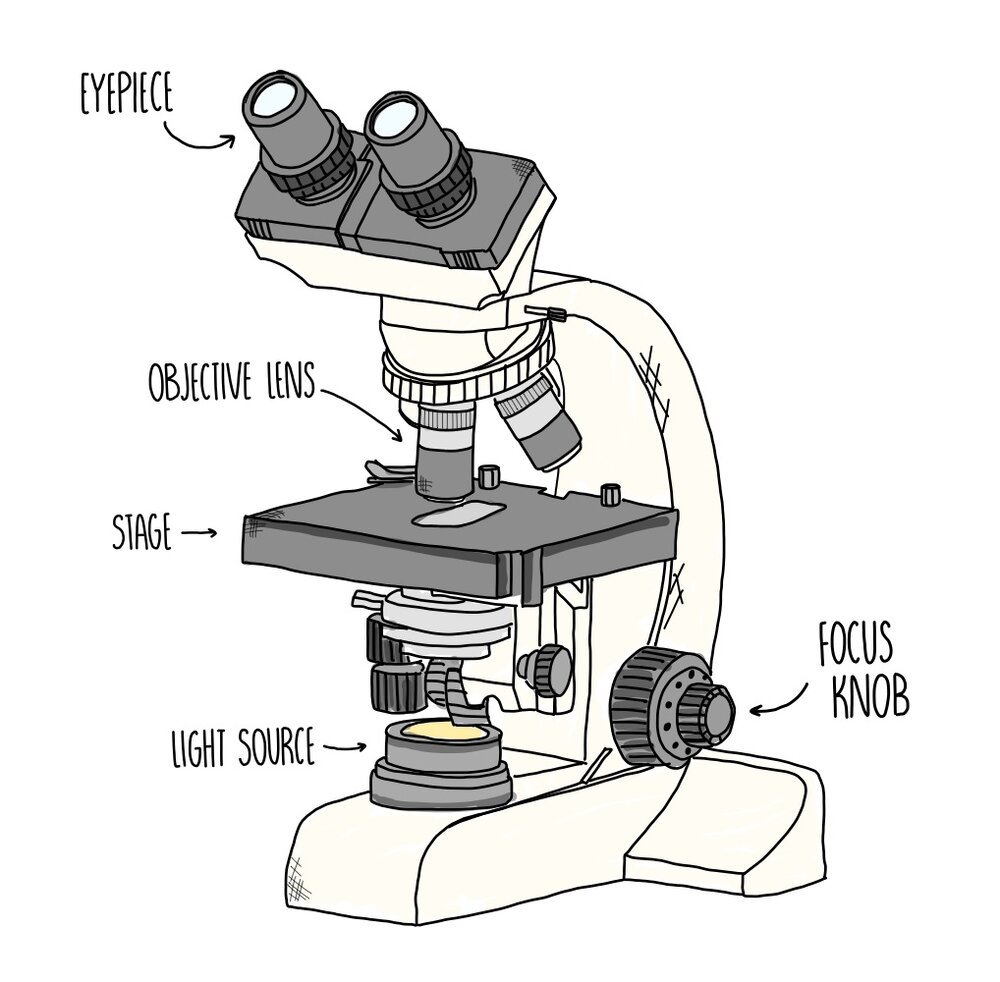Microscope and Discovering Cells
Cells are the smallest building blocks of living things. They are responsible for important functions that keep living organisms alive.
The microscope played a crucial role in discovering cells. As microscopes improved, like the modern light microscope, scientists could learn more about how cells are structured.
Parts of the modern light microscope:
- Arm: Holds the microscope.
- Stage: Where the slide with the sample is placed.
- Light source: Provides illumination.
- Eyepiece lens: Helps view the sample on the slide and magnifies it.
- Objective lenses: These lenses can be rotated and have different magnification powers.
- Coarse focus knob: Moves the stage up and down for focusing.
- Fine focus knob: Used for fine-tuning the focus.

There were important stages in the discovery of cells:
- Robert Hooke: In 1665, he used a simple microscope to observe dead cells from cork surrounded by walls.
- Anton van Leeuwenhoek: In 1673, he observed tiny living organisms in a drop of pond water using his microscope.
- Matthias Schleiden: In 1838, he discovered that plants are made up of cells.
- Theodor Schwann: In 1839, he found that animals are made up of cells.
- Rudolf Virchow: In 1855, he realized that cells come from other cells through division.

Cell theory
Scientists developed the cell theory, which has three main ideas:
- Cells are the basic units of living things.
- All living organisms are made up of one or more cells.
- Cells come from pre-existing cells.
Cell Components
Living organisms' cells share fundamental components, which are:
- Plasma membrane.
Plasma Membrane: A thin membrane that surrounds every cell, its functions are:
- Protecting the cell from external factors.
- Contributing to the regulation of material exchange between the cell and its surroundings.
- Cytoplasm.
Cytoplasm: A semi-transparent gel-like substance composed mostly of water and dissolved substances. It contains various structures and surrounds the plasma membrane.
- Genetic material.
Plant Cells and Animal Cells
Plant cells and animal cells contain specialized structures called organelles.
Examples of Cell Organelles
- Endoplasmic Reticulum: Transports materials within the cell.
- Mitochondria: Produces necessary energy.
- Chloroplasts: Responsible for food production in plants through photosynthesis.
- Ribosomes: Involved in protein synthesis within the cell.
- Cell Wall: Surrounds plant cells, providing shape and support.

Classification of Living Organisms Based on their cells
living organisms are classified into two types:
- Single-celled organisms: These are organisms that consist of a single cell, such as bacteria.
- Multicellular organisms: These are organisms that consist of multiple cells, such as animals.
إعداد : شبكة منهاجي التعليمية
07 / 07 / 2024
النقاشات